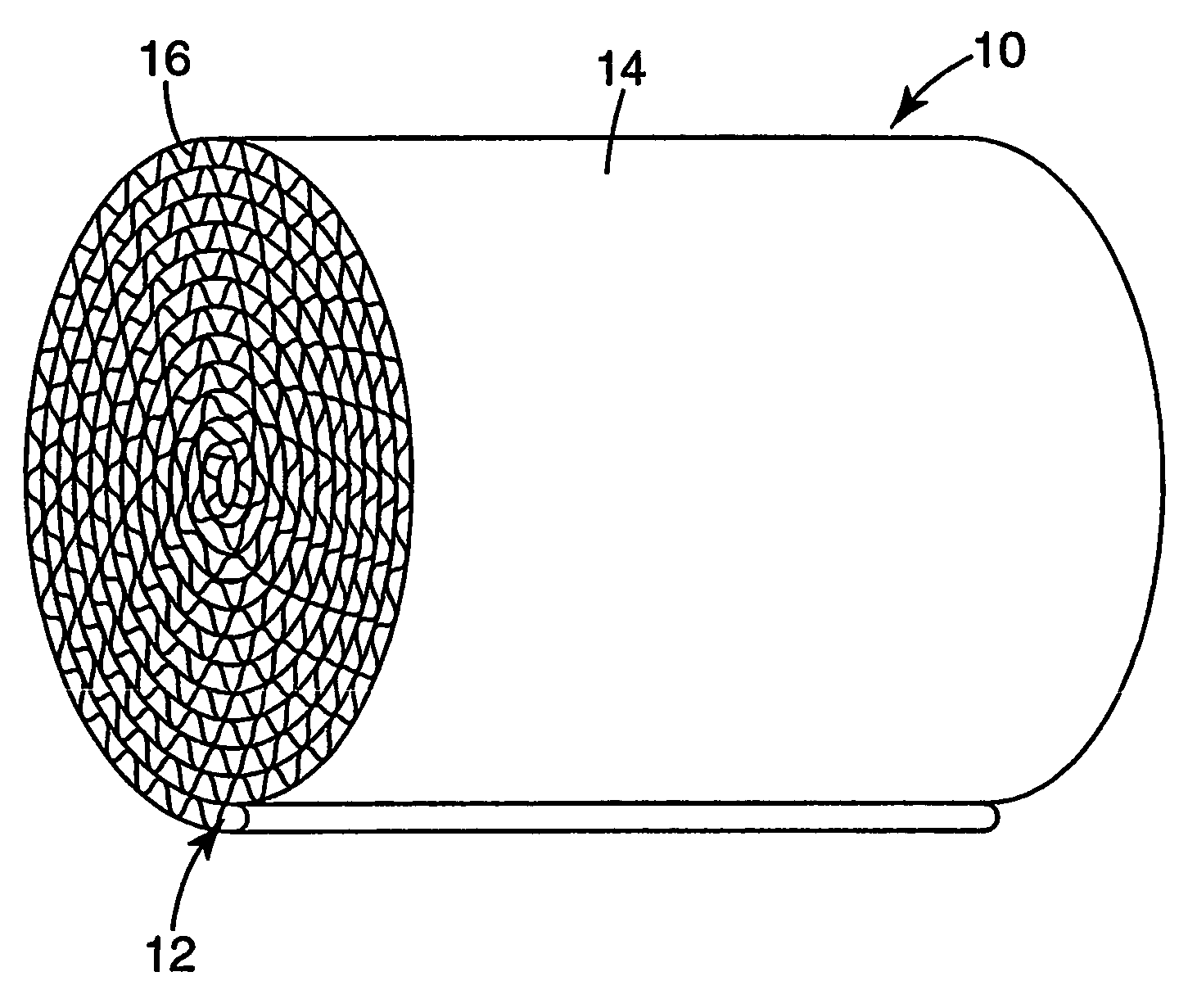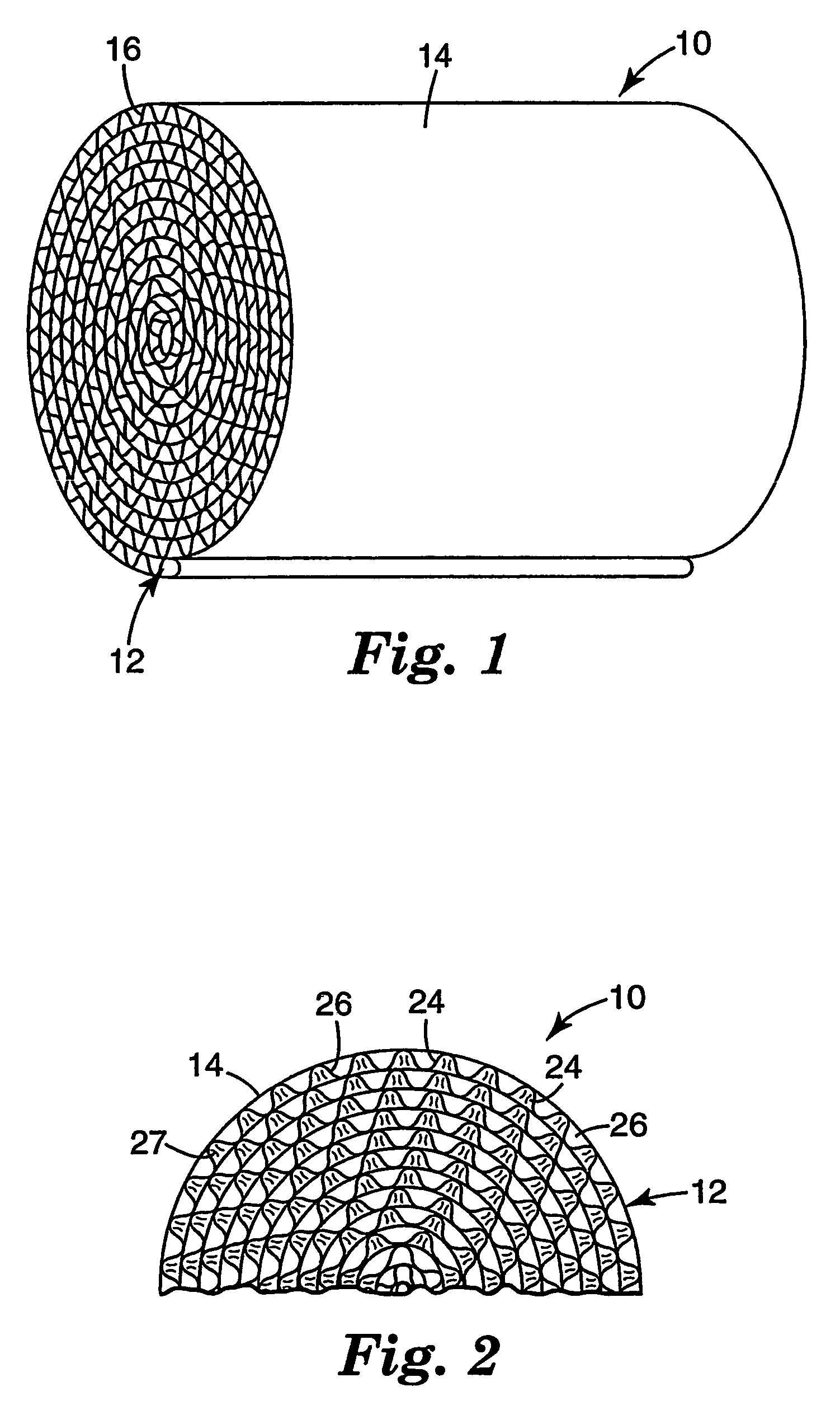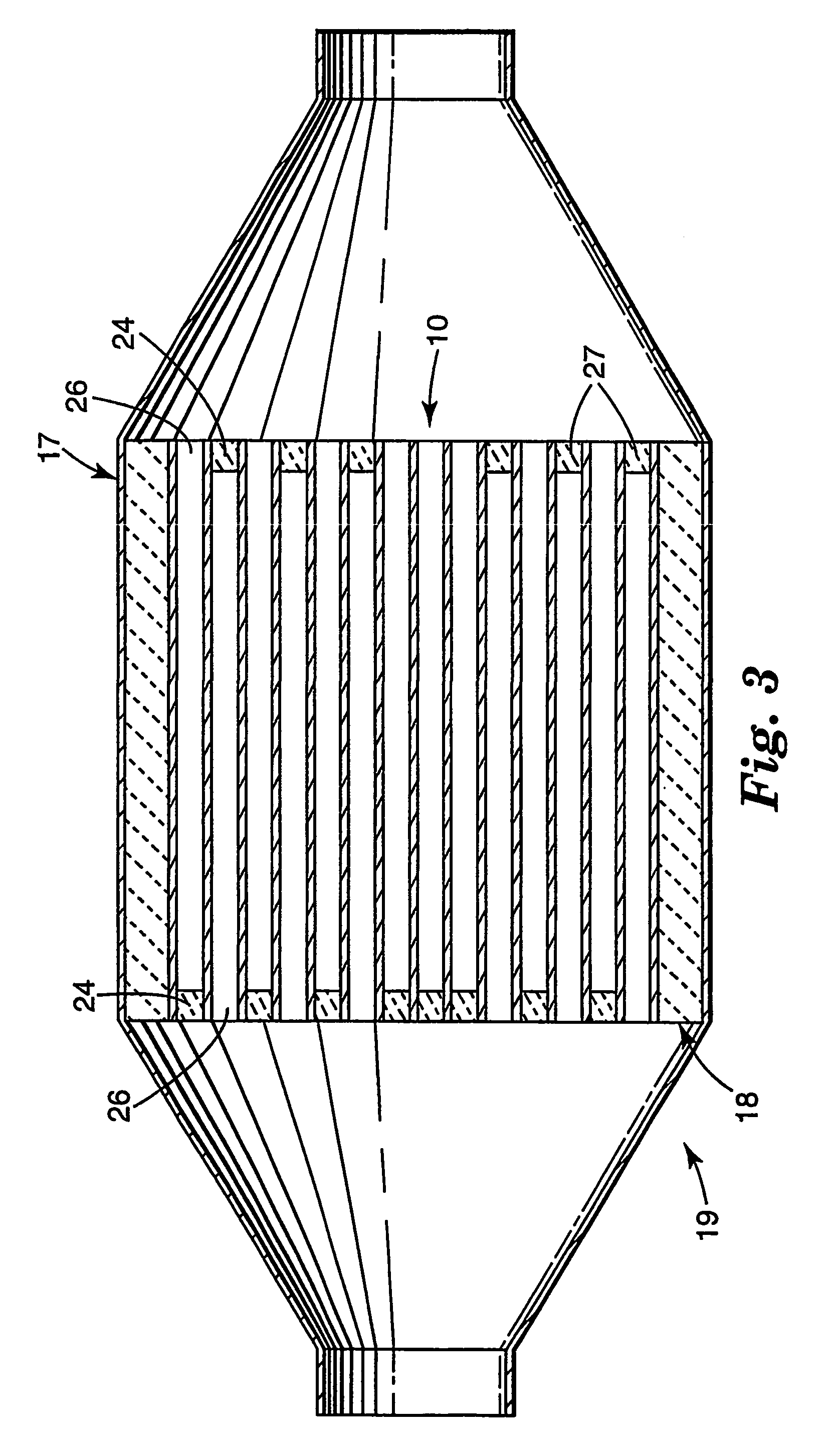Chemically stabilized beta-cristobalite and ceramic bodies comprising same
a beta-cristobalite, chemical stabilized technology, applied in the direction of machines/engines, chemical/physical processes, domestic applications, etc., can solve the problems of low combustion efficiency, relatively high cost, and high cost of combusting exhaust particulate,
- Summary
- Abstract
- Description
- Claims
- Application Information
AI Technical Summary
Benefits of technology
Problems solved by technology
Method used
Image
Examples
example 1
[0132]A primary dispersion was prepared by charging 87.0 g Dispersion III to a beaker and adding 13.0 g of isopropyl alcohol while stirring with a magnetic stir bar. A series of 9 cm by 9 cm green, ceramic fiber, paper coupons were impregnated by immersing the entire coupon into the primary dispersion on one side for 10 seconds, turning the coupon over and immersing it in the dispersion for an additional 10 seconds. After impregnation, the coupons were hung vertically and air dried overnight at room temperature (about 25° C.). The air dried coupons were then dried in a vented oven at 100° C. for 30 minutes, and then calcined and fired in a vented box furnace in air using the following heating sequence: room temperature to 500° C. in 3 hours; hold at 500° C. for 1 hour; heat from 500° C. to 1100° C. in 2 hours; hold at 1100° C. for 1 hour; cool in furnace to room temperature. The fired coupons are referred to as Coupon A.
example 2
[0133]A beaker was charged with 85.06 g of Dispersion I, and 2.18 g of silicon carbide (SiC) powder having an approximate surface area of 5 square meters per gram (UF5 SiC available from H. C. Starch, Newton Mass.) were added while stirring. The dispersion was then sonicated, i.e., ultrasonically treated, for about 3 minutes using a Branson Sonifier Cell Disruptor 350 (Branson Ultrasonics Corporation, Danbury, Conn.) fitted with a high energy, 5.1 mm titanium horn to homogenize the dispersion. The dispersion was magnetically stirred during ultrasonic treatment. Then 12.76 g of isopropyl alcohol were stirred into the dispersion to form a primary dispersion. Green ceramic paper coupons were impregnated, dried, calcined, and fired according to the procedure in Example 1. The fired coupons are referred to as Coupon B.
example 3
[0134]A primary dispersion was prepared according to the procedure of Example 2 except 2.18 g of a silicon carbide powder having an average particle size of about 3 micrometer (1200 black SiC available from Electro Abrasives, Buffalo, N.Y.) were used instead of UF5 SiC. Green ceramic paper coupons were impregnated, dried, calcined, and fired according to the procedure in Example 1. The fired coupons are referred to as Coupon C.
PUM
| Property | Measurement | Unit |
|---|---|---|
| temperature | aaaaa | aaaaa |
| height | aaaaa | aaaaa |
| length | aaaaa | aaaaa |
Abstract
Description
Claims
Application Information
 Login to View More
Login to View More - R&D
- Intellectual Property
- Life Sciences
- Materials
- Tech Scout
- Unparalleled Data Quality
- Higher Quality Content
- 60% Fewer Hallucinations
Browse by: Latest US Patents, China's latest patents, Technical Efficacy Thesaurus, Application Domain, Technology Topic, Popular Technical Reports.
© 2025 PatSnap. All rights reserved.Legal|Privacy policy|Modern Slavery Act Transparency Statement|Sitemap|About US| Contact US: help@patsnap.com



